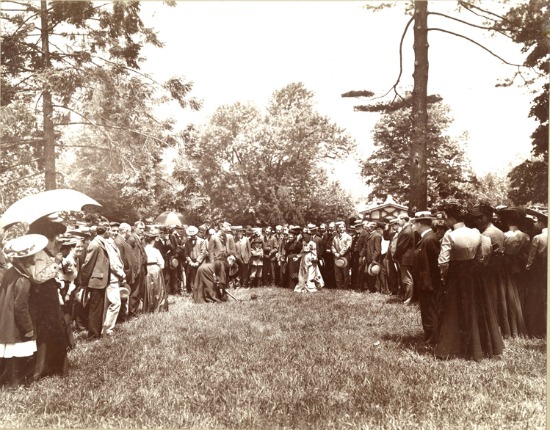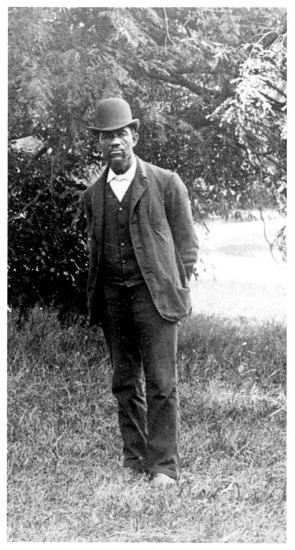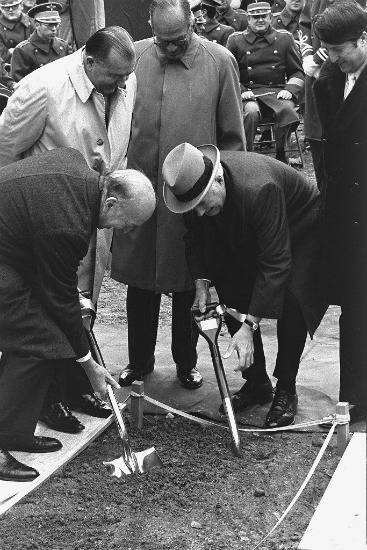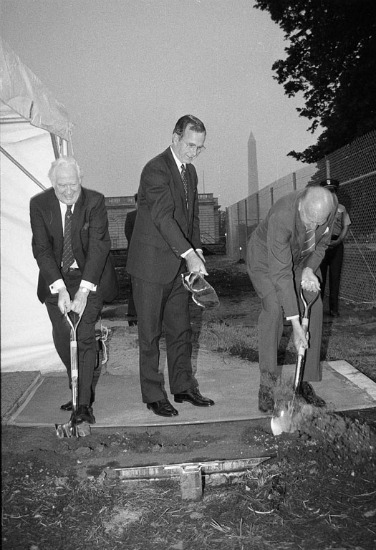President Obama to Speak At Groundbreaking for African American History and Culture Museum
The groundbreaking ceremony for the Smithsonian’s newest museum, scheduled to open in 2015, will feature Obama, Laura Bush and others
/https://tf-cmsv2-smithsonianmag-media.s3.amazonaws.com/filer/20120216125003african-american-history-and-culture-museum.jpg)
Smithsonian’s newest museum, the National Museum of African American History and Culture, will break ground with much fanfare. As announced yesterday, the February 22 groundbreaking ceremony on the National Mall will be emceed by actress and singer Phylicia Rashad, will feature former First Lady Laura Bush and will include remarks by President Barack Obama. The event will also feature musical performances by opera singer Denyce Graves, baritone Thomas Hampson, jazz pianist Jason Moran, the U.S. Navy Band and others.
The museum will be located 0n the National Mall on Constitution Avenue between 14th and 15th streets, between the American History Museum and the Washington Monument. Scheduled to open in 2015, the museum will be the only national museum devoted exclusively to African American life, art, history and culture. Plans first began in 2003, when Congress passed the National Museum of African American History and Culture Act. Since July 2005, when Lonnie Bunch was named the director, the museum has began collecting artifacts and producing exhibitions displayed in the American History Museum and elsewhere.
In April 2009, an official jury selected the design for the building, choosing David Adjaye’s bronze, multi-tiered structure. “The form of the building suggests a very upward mobility,” Adjaye said in a recent interview with Smithsonian. “For me, the story is one that’s extremely uplifting, as a kind of world story. It’s not a story of a people that were taken down, but actually a people that overcame.”
Of course, the National Mall is home to many Smithsonian Museums—and has hosted a number of groundbreaking ceremonies throughout the Institution’s history. We assembled a selection of shovel-at-the-ready images from the Smithsonian Institution Archives.

The groundbreaking for the Natural History Museum on June 15, 1904. Photo courtesy of the Smithsonian Institution Archives
The Natural History Museum was originally constructed as the U.S. National Museum Building. Architects Joseph Coerten Hornblower and James Rush Marshall, Secretary Samuel P. Langley and Smithsonian employees looked on as the first shovel of dirt was lifted in 1904.

Solomon Brown, Smithsonian employee and poet, was present at the Natural History Museum groundbreaking in 1904. Photo courtesy of the Smithsonian Institution Archives
Solomon Brown worked at the Smithsonian for more than fifty years, from 1852 to 1906, and was likely the Institution’s first African-American employee, hired as a cabinetmaker soon after its founding in 1846. On the 100th anniversary of the groundbreaking, in June of 2004, a tree was planted in his name on the grounds of the National Museum of Natural History.

The 1916 groundbreaking for the Freer Gallery of Art. Photo courtesy of the Smithsonian Institution Archives
Geologist George P. Merrill and others gathered in 1916 to watch sod lifted for the Freer Gallery of Art, which was completed in 1923 to house railroad manufacturer Charles Lang Freer’s extensive collection of classical Asian art.

The 1972 groundbreaking for the Air and Space Museum. Photo courtesy of the Smithsonian Institution Archives
In 1972, the Smithsonian secretary Dillon S. Ripley and Supreme Court Chief Justice Warren Burger turn over the first shovelfuls of dirt for the Air and Space Museum. They were joined by Representative Kenneth Gray and Senators Jennings Randolph and J. William Fulbright. Before the building was constructed, the museum was known as the National Air Museum, and its artifacts were housed in a number of Smithsonian buildings.

Chief Justice Warren E. Burger, Vice President George Bush, and Secretary S. Dillon Ripley break ground on the Quadrangle Complex on June 21, 1983. Photo courtesy of the Smithsonian Institution Archives
The Quadrangle complex was built behind the castle to house the National Museum of African Art, the Sackler Gallery of Asian Art, the S. Dillon Ripley Center and the Enid A. Haupt Garden. Then-vice president George Bush was on hand to supervise the groundbreaking in 1983.

Museum staff, director John Kinard and Smithsonian secretary Robert McCormick Adams break ground on the Anacostia Community Museum in 1985. Photo courtesy of the Smithsonian Institution Archives
The Anacostia Community Museum was originally known as the Anacostia Neighborhood Museum, designed to reflect the history and traditions of families, organizations, individuals and communities, as well as serve the Anacostia Community. A groundbreaking ceremony in 1985 included the museum’s founding director John Kinard and then-Smithsonian secretary Robert McCormick Adams.
/https://tf-cmsv2-smithsonianmag-media.s3.amazonaws.com/accounts/headshot/joseph-stromberg-240.jpg)
/https://tf-cmsv2-smithsonianmag-media.s3.amazonaws.com/accounts/headshot/joseph-stromberg-240.jpg)